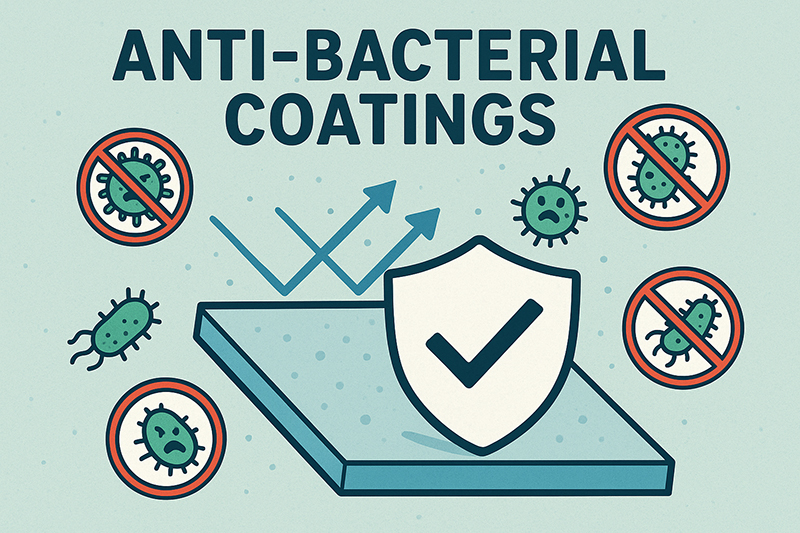Zinc Oxide (ZnO) sputtering targets are a key material utilized during the deposition process known as magnetron sputtering. In the process, high-energy ions strike the target and eject zinc oxide atoms. The ejected atoms deposit themselves on substrates such as glass, forming a thin yet strong film. These Zinc Oxide films have been greatly helpful in the past. They provide distinct optical, electrical, and mechanical characteristics that improve glass surfaces across industrial processes.
1. Anti-Reflective Coatings
One of the most important uses of Zinc Oxide films is in the manufacture of anti-reflective glass. Upon coating a glass surface with such films, the amount of reflected light is lowered. This helps to make the images seen through the glass clearer. I remember when I was developing optical instruments like eyeglasses, camera lenses, and screen screens, the elimination of glare was crucial. Anti-reflection coatings have been employed to give better quality images in general devices such as telephones, pads, and HD TVs. In practice, the zinc oxide layer causes the light to pass straight through the glass, enhancing the visual perception and reducing eye fatigue when constantly used.
2. Transparent Conductive Coatings
Another important application is in transparent conductive coatings. Zinc Oxide films can conduct electricity but are extremely transparent. All these are a real blessing for modern electronic devices. Solar panels, touch screens, and flex electronics are quoted by the majority to see these coatings at work. For instance, when used for the outdoor panels of solar devices, these films permit lots of light in but have the electric current aboard. In the lab and shop, most of the technicians have seen that control over the film thickness is the control over conductivity and transparency. The result is a coating that enables devices to function at their best while presenting a clean, clear look.
3. Scratch-Resistant Coatings
Another area where Zinc Oxide films have been incredibly promising is the creation of scratch-resistant coatings for glass. If a coat of Zinc Oxide is applied, it forms a protective film on the glass. This film offers reinforcement to surfaces that are typically prone to repetitive use and the scratch of everyday life. On uses such as auto windshields, smartphone screens, and even eyeglasses, the films help cut down on scratches that result from bumps or everyday use. I recall many situations in auto repair where the additional coating equated to longer lifespan transparency and improved looks on windshields and windows. The longevity is highly prized by both consumers and producers.

4. Self-Cleaning Surfaces
Zinc Oxide films are also used in creating self-cleaning glass. When exposed to ultraviolet light, the film initiates a photo-catalytic reaction. In the process, natural impurities like oil and dirt dissolve on the surface. In daily applications, self-cleaning glass is found in building envelopes, windshields of cars, and even glasses. This feature not only reduces the frequency and effort required to clean the glass but also maintains the view clear at all times. With time, the majority of building managers have seen maintenance cost savings where self-cleaning panels have been incorporated, and therefore, they are highly demanded in residential and commercial buildings.
5. Anti-Bacterial Coatings
The antibacterial nature of Zinc Oxide films is highly desirable in public and sensitive environments. These films prevent bacteria growth when deposited as thin film on glass surfaces. Hospitals, kitchens, and public transportation facilities are positively impacted by these treatments because cleaner surfaces create a healthier environment. The majority of health professionals have commended the use of these coatings in reducing the spread of pathogens. In everyday life, a glass surface with an antibacterial coating means fewer worries regarding germs or infections. This use is a valuable commodity, especially in places where high levels of hygiene have to be upheld.

6. Optoelectronic Applications
It also brings more attention to the use of Zinc Oxide films in optoelectronic devices. Due to its wide bandgap and intense ultraviolet absorption, Zinc Oxide is also a suitable material for devices like light-emitting diodes and sensors. For example, engineers often use such films in solid-state lighting and photovoltaic modules. I have often seen situations where a controlled deposition of Zinc Oxide results in devices that exhibit bright light emission and high signal detection. Such superior optical and electrical characteristics, along with its performance under UV exposure, make Zinc Oxide a choice material in modern electronics. It helps to form systems where efficiency and lifespan are complementary.
Conclusion
In brief, Zinc Oxide magnetron sputtering targets are used many times in today’s glass coatings. Their ability to create thin, high-quality films makes them ideal for enhancing glass in various ways, including reducing reflections and abrasions, adding transparency to conductive films, and incorporating self-cleaning properties and antibacterial features. These benefits don’t stay theoretical; they are applied in everyday products like eyeglasses, cellular phones, and window glass in buildings. Even in optoelectronics, a more specialized discipline, Zinc Oxide films have been found reliable.
Throughout my many years of professional experience as a materials scientist and engineer, I have witnessed firsthand the tangible benefits of these films. For most of those practical uses, an upstanding materials supplier is a necessity. In this regard, Stanford Advanced Materials (SAM) provides high-quality Zinc Oxide magnetron sputtering targets that most professionals depend on. Their commitment to meeting industrial demands makes them a first-stop for anyone working with advanced glass coatings.




